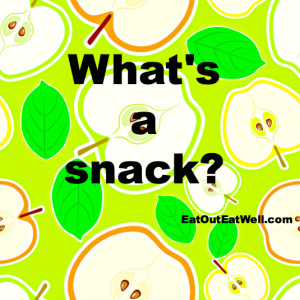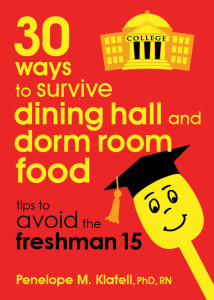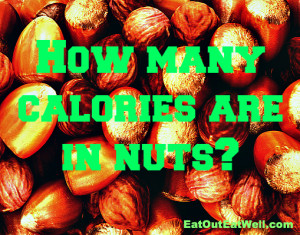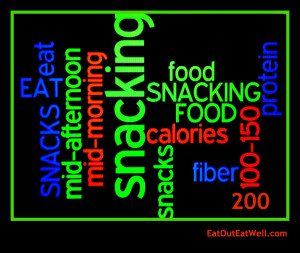 Do you get so hungry mid-morning or mid-afternoon that you grab whatever you can from a cart, vending machine, the snack room or fridge — and chow down?
Do you get so hungry mid-morning or mid-afternoon that you grab whatever you can from a cart, vending machine, the snack room or fridge — and chow down?
if you do, you’re not alone. According to research, snacking, including drinking beverages at times other than during a regular meal,accounts for more than 25% of Americans’ calorie intake everyday. Snacking has turned into “a full eating event,” or a fourth meal, averaging about 580 calories each day.
Eating while you’re doing something else, called secondary eating, has also increased. Between 2006 and 2008, the amount of time we spend eating breakfast, lunch and dinner stayed at 70 minutes but secondary eating doubled from 15 minutes a day in 2006 to nearly 30 minutes in 2008. There was nearly a 90% jump in the time spent on secondary drinking: from 45 to 85 minutes. (Ever wonder why Starbuck’s is so crowded?)
There’s an increase in snacking across the board, but beverages account for 50% of snack calories. It’s way too easy to forget the calories in drinks. And, we spend about 12% of our total food money at the supermarket on packaged snacks.
What’s A Snack?
A snack shouldn’t be a fourth meal. Most recommendations are that a snack be between 150 and 200 calories and have some protein for both satiety and to help keep your blood sugar level stable. Some fiber in the snack helps keep you full.
Here are some examples – just be aware of portion sizes (for instance, don’t eat half a jar of peanut butter or a huge wedge of cheese):
- Hummus with baby carrots or other vegetables
- ½ cup of low-fat cottage cheese with fruit or whole grain crackers
- An apple, orange, peach, or grapes (or other fruit) with either ¼ cup almonds (or other nuts) or an ounce of cheese or a part skim cheese stick
- Non-fat, unsweetened yogurt with ½ cup of whole grain cereal and/or fruit
- A 12-ounce non-fat latte or cappuccino
- Whole-grain crackers with peanut, nut, or seed butter
- Trail mix with nuts, seeds, raisins, and cereal (cereal can cut down on the calories while increasing the volume – nuts are a high calorie food)
- A whole grain (especially if it’s high fiber) English muffin or slice of toast and low-fat cream cheese or a slice of reduced fat (2%) cheese
- A portion controlled serving of nuts
Smart Snacking Tips
- Make sure your snack is 200 calories or less and has protein and fiber to help keep you full and satisfied.
- 100-calorie snack packages are usually processed and probably are not great for you choices. Check the ingredients, protein, and fiber content.
- Beware of “healthy” or “halo-food” snacks like some sugary cereals, some sweetened, flavored yogurts, some so-called protein bars, yogurt-covered pretzels, and sports drinks.
- Ask yourself if you’re snacking out of boredom, stress, or if you’re really hungry.
- Don’t let yourself get so hungry that it’s impossible to control what and how much you have for a snack.
- There are many choices. Pick snacks that you enjoy and can look forward to eating.
- Keep healthy snacks in your desk drawer, your kitchen cabinet, or in your car so when you’re really hungry you have a good choice readily available. Otherwise it’s way too easy to succumb to the vending machine, newsstand, food truck, or the donut or apple fritter staring at you when you pay for your coffee.
Do you know someone who’s off to college?
 Get my book for some easy, doable tips on how to eat well in dining halls and dorm rooms. Available in print and as an ebook from Amazon and as an ebook from Barnes & Noble.
Get my book for some easy, doable tips on how to eat well in dining halls and dorm rooms. Available in print and as an ebook from Amazon and as an ebook from Barnes & Noble.

